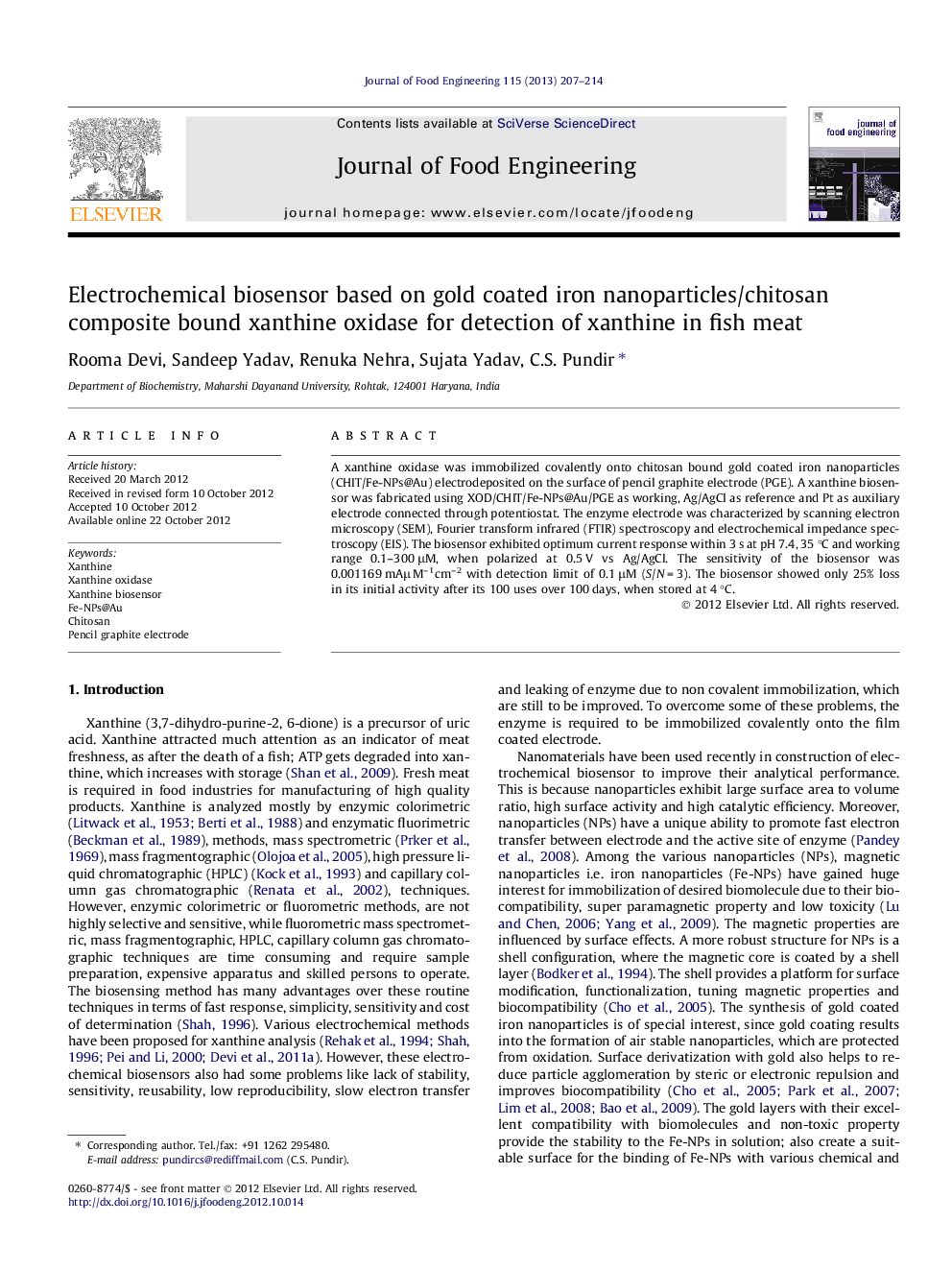| Article ID | Journal | Published Year | Pages | File Type |
|---|---|---|---|---|
| 223380 | Journal of Food Engineering | 2013 | 8 Pages |
A xanthine oxidase was immobilized covalently onto chitosan bound gold coated iron nanoparticles (CHIT/Fe-NPs@Au) electrodeposited on the surface of pencil graphite electrode (PGE). A xanthine biosensor was fabricated using XOD/CHIT/Fe-NPs@Au/PGE as working, Ag/AgCl as reference and Pt as auxiliary electrode connected through potentiostat. The enzyme electrode was characterized by scanning electron microscopy (SEM), Fourier transform infrared (FTIR) spectroscopy and electrochemical impedance spectroscopy (EIS). The biosensor exhibited optimum current response within 3 s at pH 7.4, 35 °C and working range 0.1–300 μM, when polarized at 0.5 V vs Ag/AgCl. The sensitivity of the biosensor was 0.001169 mAμ M–1 cm–2 with detection limit of 0.1 μM (S/N = 3). The biosensor showed only 25% loss in its initial activity after its 100 uses over 100 days, when stored at 4 °C.
► XOD immobilized covalently onto CHIT/Fe-NPs@Au/PGE. ► XOD electrode showed optimum response within 3 s at 0.5 V, pH 7.4 and 35 °C. ► Linear range for xanthine was 0.1–300 μM with a detection limit of 0.1 μM. ► Electrode lost 25% of its initial activity after 100 uses over 100 days. ► Electrode measured xanthine in fish, chicken, pork, beef meats.
